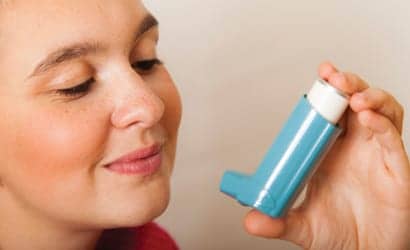One facility’s answer to nursing and respiratory care shortages in an attempt to provide better cost/resource utilization in a hospital whose philosophy remains “The Child First and Always.

Education Comparisons
Debate continues in the respiratory care community as to whether the profession should become more generalized or more specialized. The question is easily answered when viewed in the context of our job description(s). The profession of respiratory care is a specialized field; however, education in the areas of general pharmacology, fluid and electrolyte balance, head-to-toe physical assessment, and intravenous (IV) therapy is needed by RCPs if they are to be utilized effectively in cross-training with nursing. By the same token, nursing programs receive very little, if any, formal education in respiratory care. Robert Czachowski, PhD, et al1 at the Indiana University Center for Survey Research, Bloomington, conducted a nationwide study comparing number of hours of respiratory care instruction in nursing schools with that of respiratory therapy programs. Participants included 1,077 nursing schools and 223 respiratory care programs. Czachowski and his team concluded that the entry-level RN, regardless of education, has extremely limited didactic instruction in 15 typical respiratory care procedures, and utilization of RCPs as faculty in nursing schools is severely limited with none being used in associate nursing programs. Thus, real concerns exist with arbitrarily transferring respiratory care responsibilities to nursing in clinical settings. Along the same lines, Jan Bohlman, RRT, compared curriculums of associate degree nursing programs and respiratory care programs in Oregon community colleges.2 Bohlman’s findings emphasize the fact that RCPs, in fact, have a more specific pharmacology course with little evidence of nursing-focused topics and that very little, if any, respiratory content was taught in the nursing programs. If hospitals and organizations view cross-training as a cost-effective and efficient means whereby to utilize resources, thorough education/training for nurses and therapists cannot be underscored enough.
RCP Effectiveness
In his presentation at the AARC National Convention in October 2000,3 James K. Stoller, MD, reviewed his findings as to the effectiveness of RCPs. His conclusions produced resounding support for the positive impact that RCPs can have in the health care climate. He reported that the utilization of protocols by RCPs decreased time on mechanical ventilation by 3 days and that the use of respiratory therapy consult services was associated with improved allocation of respiratory care services with lower costs and no adverse events in two studies. Stoller sites three studies comparing RCPs, RNs, and physicians on using metered-dose inhalers. RCP knowledge and clinical skill in this area were noted to be the most effective of the three groups.
RCPs As Multiskilled Health Care Providers
An AARC task force study published the following findings: 79% of respiratory care departments across the nation were providing clinical procedures other than traditional respiratory care tasks such as invasive and noninvasive cardiac diagnostic procedures, and extracorporeal membrane oxygenation (ECMO); and when medical directors, hospital administrators, and respiratory care department managers were asked if they expected to see an increase in cross-utilization of RCPs, the response was a resounding affirmation. Of those surveyed, 52.8% of medical directors, 69.6% of hospital administrators, and 73.8% of respiratory care department managers believed that RCP cross-training would occur. When this same group was asked which of these departments they believed were best prepared for the future, respiratory care was given the highest grade.
In a 1995 unpublished survey of 3,800 national hospitals (28% responded), Karen Baldasere-Burton, RN, RRT, director of respiratory care at Primary Children’s Medical Center (PCMC), Salt Lake City, and John Salyer, MBA, FARC, RRT, sought to assess the details of how respiratory care services were being operated nationwide. They concluded that there was considerable unexplained variation in how respiratory care services are operated and care is delivered. Three of their five conclusions for possible answers to improving care and decreasing health care costs were as follows: cross-training non-respiratory care personnel to perform low-risk, high-volume respiratory care procedures; cross-training of respiratory therapists to other nontraditional roles; and the use of RCPs in advanced assessment of patients and the administration of clinical practice guidelines.
State Expanded Practice
The New Mexico Society for Respiratory Care has led the way in the formal role expansion of RCPs by adding to their state licensure an “expanded practice act.” Their role as providers of cardiopulmonary practices has been formally expanded.4
PCMC has established a multidisciplinary care team that has crossed once clearly drawn professional lines. Historically, in an effort to meet the demands for their services and in the face of staffing shortages, respiratory care services, under the direction of Salyer and Baldasere-Burton, began cross-training non-intensive care unit (ICU) nurses in the areas of small volume nebulizer treatments and oxygen therapy. Chest physiotherapy (CPT) was initially distributed to nursing, but was reabsorbed by the respiratory care department when this therapy was identified by both nursing and RCPs as a skill that was difficult for such a large volume of nurses to perform enough to be proficient. Less than 5% of all non-cystic fibrosis, non-ICU inpatients receive CPT treatments at PCMC. Despite the development of protocols and respiratory distress scoring systems to assist in the appropriate utilization of therapies to disease state(s), the program failed miserably. It was assumed that nurses had received more formal education in respiratory care than was fact. Respiratory care services was not able to supply the resource personnel it had promised due to staffing shortages and pediatric and newborn ICU patient census.
For the reasons previously stated, it was proposed in 1995 that a multidisciplinary care group be established comprised of RCPs and respiratory care support role RNs under the auspices of a medical director. This specialized team became known as the Quality Care Assessment Team (QCAT). The role of the RCPs was to assess every patient who had been ordered on respiratory care services, which was denoted by any order for respiratory therapy. It became their job to provide a respiratory therapy consult service that would provide communication between respiratory care, nursing, and physician teams, which included residents and attendees. Care plans were written daily in the chart by RCPs after they obtained a thorough patient history and performed a patient assessment. The written plan was recorded only following discussions with both the patient’s nurse and assigned physician. Outcomes data were collected by the RCPs in almost every aspect of care. The respiratory support role RN was given the tasks of disseminating information and respiratory care education to their assigned unit under the tutelage of the RCPs. They provided measured outcomes feedback to their specific units and aided in conflict/problem resolution. The areas represented by nursing were rehabilitation, children’s medical/surgical, and infant unit.
Five years later, many successes can be noted. As a result of the RCPs’ ongoing effort to educate and report measured outcomes, the Intermountain Health Care Corporation in Salt Lake City, of which PCMC is a part, has adopted the PCMC bronchiolitis protocol. It did so when a study by RCPs revealed that approximately $250,000 could be saved by each of the other IHC hospitals that care for a large number of bronchiolitis patients.
This team has now expanded their practice into the Rapid Treatment Unit (RTU), specifically in the area of postanesthesia care. The RTU is a 24 hour or less hospital stay area for either patients directly admitted to the unit for short-term quality care or those coming through the PCMC emergency department (ED) who, it is believed, would not benefit from early inpatient hospitalization.5 One area of the unit is dedicated to patients who receive procedures requiring anesthesia. Under the direction of an anesthesiologist who oversees the anesthesia and a physician or licensed independent practitioner who performs the procedure, the RN and RRT assist with the procedure and share in the postanesthesia recovery of the patient. Much resistance to RCPs covering postanesthesia patients was initially encountered, but has since given way to a “new day, new way” attitude. The philosophy of this practice has best been described by Baldasere-Burton when she said, “If we always do what we have always done, then we will always get what we have always gotten.”
Being ever progressive in seeking better ways to utilize staff and meet patient needs, Thomas and Baldasere-Burton have approved a proposal by the QCAT team to expand their practice further by cross-training with the RNs in the RTU. The Utah State Licensure Act only limits RCPs in Utah in the administration of blood or blood products. RCPs are thus preparing for this practice expansion by completing modules on general nursing pharmacology, fluid and electrolyte balance, and IV therapy to include clinical proficiency passoffs. The nurses have already been trained in the delivery of small volume nebulizer treatments, the bronchiolitis protocol pathway, and oxygen therapy.
Where Do We Go From Here?
The RCPs on the QCAT team, along with others such as Judy Tiesort, RRT, who have taken on the challenge to sharpen skills, enlarge and enrich their jobs, and raise the standards of clinical excellence, have blazed a trail for RCPs nationally. Not all formal respiratory care education programs across the nation are providing program participants with all the skills necessary to succeed in the ever-evolving field of respiratory care. As our services become more in demand, many additional skills that have not always been thought of as traditional roles for the RCP beg to be taught. The practitioner will need to value multiple skills as part of the standard curriculum if our future as a strong medical profession is to be ensured. The development of respiratory care consult services is the key, and every effort should be made to implement them throughout the country. Skills in areas of general pharmacology, fluid and electrolyte balance, and IV therapy as seen from a nursing focus should be acquired. The profession must move from being task- and treatment-oriented to a more disease and patient responsive centered focus. Passive therapies like CPT should give way, if not effective, to more patient-active therapies such as effective cough therapy, and RCPs taught maneuvers to increase alveolar ventilation. This will require a more creative approach to treatments and a higher level of skill, critical thinking, and communication. Every opportunity for research and publication should be exhausted so that science-based respiratory care medicine can be taught and practiced. Fear of change can be paralyzing to a profession. RCPs must embrace change and, in fact, lead the way. The strength of the whole profession will be only as strong as the sum of its parts.
Kim Bennion, RRT, is a clinical supervisor at Primary Children’s Medical Center, Salt Lake City.
References
1. Czachowski R. Study finds respiratory care instruction very limited in nursing schools. AARC Times. 1994;18:99-108.
2. Bohlman J. Curriculum comparison between associate degree nursing and respiratory care programs in Oregon Community Colleges. OSRC Newsletter. 1994;8:4-5.
3. Stoller JK. Are respiratory therapists effective—assessing the evidence. Respiratory Care. 2001;6:56-65.
4. Bunch D. New Mexico RTs—patients reap rewards, practice licensure law. AARC Times. 2001;25:48-52.
5. Thomas D. Our new RTU—an innovative adaptation of the less than 24 hour stay holding unit. Journal of Emergency Nursing. 2000;26:507-513.









